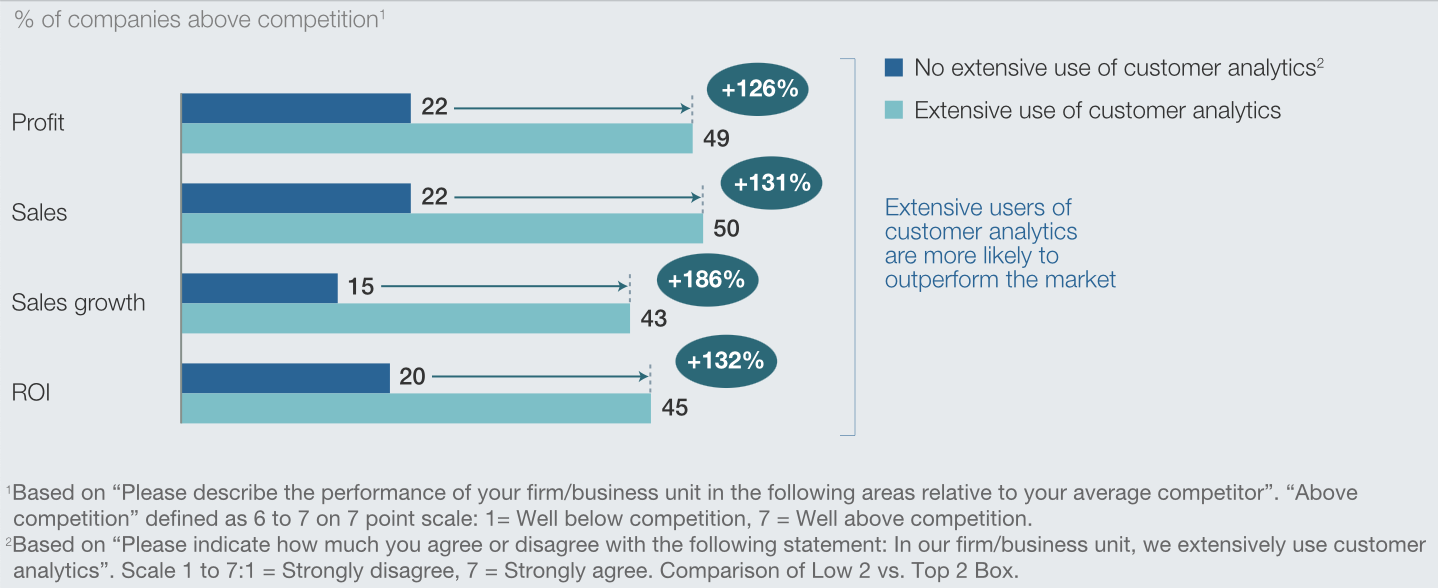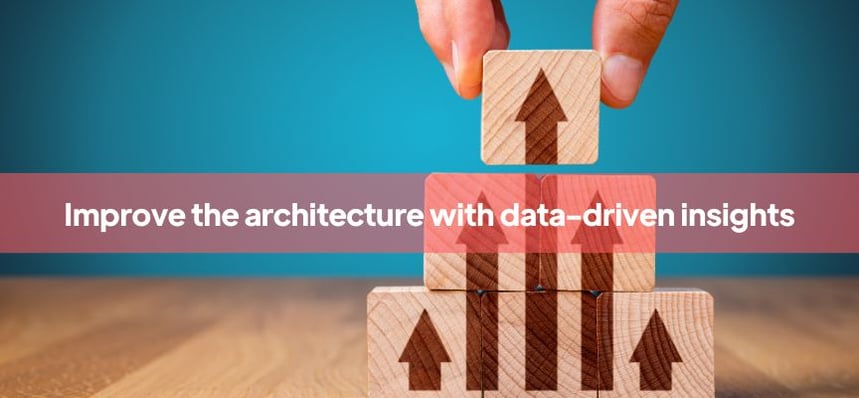In the digital era, staying ahead of the curve is a must for businesses to remain competitive. As we've previously discussed in our blog post on future-proofing your software architecture, the secret to this adaptability lies in crafting software architectures that are not only scalable and flexible but also primed to meet future business needs. However, to truly foster continuous improvement in application design and performance, businesses must take a step further and harness the power of data-driven insights for architectural decision-making.
The impact of data-driven decision making
In today's data-rich environment, businesses have a treasure trove of information at their fingertips that can guide their decision-making processes. According to a study by McKinsey, organizations that leverage analytics to drive decision-making witness a whopping 126% profit improvement over their competitors. This is because data-driven insights provide a clear, objective view of performance, enabling businesses to identify areas of strength and weakness, and make informed decisions about where to focus their improvement efforts.
 Source: McKinsey study
Source: McKinsey study
When it comes to software architecture, data-driven insights can be used to inform decisions about everything from system design to resource allocation. For instance, by analyzing usage data, businesses can identify which features of their application are most popular with users, and prioritize these for further development. Similarly, by monitoring system performance, businesses can identify bottlenecks and areas of inefficiency, and make targeted improvements to enhance overall performance.
Using analytics for architectural decision-making
So, how can businesses utilize analytics to inform their architectural decisions? The first step is to establish a robust data collection and analysis process. This involves setting up systems to collect data on a range of key performance indicators (KPIs), such as user engagement, system performance, and resource utilization. Once this data is collected, it can be analyzed to generate actionable insights.
For example, if data shows that a particular feature of an application is rarely used by users, this could indicate that the feature is not meeting user needs and may need to be redesigned. Alternatively, if data shows that system performance is consistently poor during peak usage times, this could indicate a need for additional resources to handle increased demand.
In addition to informing decision-making, data-driven insights can also be used to measure the impact of changes and improvements. By comparing pre- and post-implementation data, businesses can assess whether their improvements have had the desired effect, and make further adjustments as necessary.
The significance of adaptive maintenance and scalability
As we've explored in our previous blog posts on adaptive maintenance and designing for scalability and high availability, these principles play a crucial role in creating a future-proof software architecture. However, they also play a key role in driving continuous improvement.
Adaptive maintenance ensures that software can adapt quickly and effectively to new requirements, while scalability ensures that software can handle increased demand without compromising performance. By incorporating these principles into their software architecture, businesses can ensure that their applications are not only robust and resilient, but also capable of evolving and improving over time.
Wrapping up
In the fast-paced world of technology, continuous improvement is not just a goal, but a necessity. By harnessing data-driven insights for architectural decision-making, businesses can drive ongoing improvement in application design and performance, ensuring that their software architecture remains agile, adaptable, and capable of meeting future needs. As we've seen, this approach is not only beneficial for businesses, but also crucial for staying competitive in the digital age.
At Kubeark, we're proud to offer a powerful platform for managing and optimizing software operations on any infrastructure. Our platform enables businesses to streamline deployment, monitoring, and distribution across clouds while driving continuous improvement. With robust monitoring and analytics capabilities, businesses can track application performance and system health, helping them make the most of their software architecture investments.
By leveraging data-driven insights, businesses can make informed decisions about their software architecture, prioritizing areas for improvement and ensuring their applications remain agile and adaptable. This approach aligns perfectly with the principles of future-proofing your software architecture, as it allows businesses to anticipate changes and adapt their strategies accordingly.
In the end, driving continuous improvement is about more than just making incremental changes. It's about harnessing the power of data to make informed decisions, adapting to changing needs, and constantly striving for excellence. With this approach, businesses can ensure that their software architecture is not just fit for the present, but also ready for the future.
Interested in learning more about how Kubeark can help you drive continuous improvement in your software architecture? Get your private demo here. It's about time we embraced the future, and with data-driven insights, we can do just that

